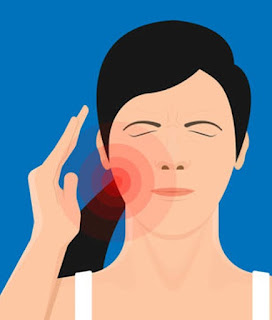Catecholamine-Mediated Stress Cardiomyopathy after COVID-19 Vaccination vs Infection
A teenage boy of average weight with a history of attention deficit hyperactivity received his second dose of BNT162b2 mRNA vaccine and complained of a headache and gastric upset. He felt better by post-vaccine day 3 but was found dead in bed the following day. Autopsy cardiac findings included myocardial fibrosis and no evidence of SARS-CoV-2 infection.
An overweight teenage boy with no prior health issues or SARS-COV-2 infection before his second dose of BNT162b2 vaccine did not have any complaints after receiving the vaccine. He was found dead in bed on the 4th day after the injection. Unique cardiac findings during autopsy included cardiac hypertrophy. The overall pattern of injury was consistent with “stress cardiomyopathy” with contraction bands and a neutrophilic/histiocytic infiltrate. There was global myocardial injury similar to that seen in the teenager discussed above, but with more widespread transmural ischemic changes and more interstitial inflammation, again with a predominant neutrophil component with histiocytes and scant lymphocytes. In this case, a subepicardial distribution of injury was not seen.
Neither boy complained of fever, chest pain, palpitations, or dyspnea. There were no rashes or lymphadenopathy.
Both teenage boys had similar clinical presentations with no obvious cardiac symptoms. The injury pattern to their heart was similar to Takotsubo cardiomyopathy (TCM), toxic, or “stress” cardiomyopathy, which is a temporary myocardial injury that can develop in patients with extreme physical, chemical, or sometimes emotional stressors seen because of surges in catecholamines. This post-vaccine reaction may represent an overly exuberant immune response similar to SARS-COV-2 and multisystem inflammatory syndrome (MIS-C) cytokine storms.
A healthy 63-year-old woman with no cardiovascular risk factors was admitted to the emergency room with new-onset dyspnoea and fever next day after receiving the first of two mRNA-1273 COVID-19 vaccinations. She had no other prior complaints. Troponin and C-reactive-protein were elevated, but other values were in normal range. An electrocardiogram showed negative T waves over the inferior/anterior leads. Invasive coronary angiography ruled out coronary artery disease, but the ventriculogram showed moderately impaired left ventricular ejection fraction of 40%. Although myocarditis is a possible differential diagnosis after COVID-19 vaccination, diagnosis of COVID-19 vaccine-induced Takotsubo cardiomyopathy (TCM) was made.
A woman in her early 50s presented to the emergency department 8 days following the second dose of the DNA ChadOX1 nCOV-19 (AZD122) with central chest pain. Initial investigations revealed a raised troponin and evolving T wave inversion on ECG. Acute coronary syndrome management was commenced. Further investigations revealed non-obstructive coronary arteries on coronary angiography and imaging revealed hypokinesia of the anterior and anterior-septal walls in the apex and midcavity level, myocardial oedema and no infarction, all in keeping with Takotsubo cardiomyopathy. The patient resolved clinically and showed improvement after a 3-month follow-up.Cardiovascular complications occur following COVID-19 vaccine - first, second or even the booster dose - and may be underreported by current surveillance methods.
In a recent study, Kaiser Permanente identified a rate of 9.1 cases of myopericarditis per 100,000 COVID-19 booster doses which is higher than prior estimates reported by the Vaccine Adverse Event Reporting System (VAERS).
Catecholamine-mediated cardiomyopathy is even less studied.
Flávio, Cadegiani, Catecholamines are the key trigger of mRNA SARS-CoV-2 and mRNA COVID-19 vaccine-induced myocarditis and sudden deaths: a compelling hypothesis supported by epidemiological, anatomopathological, molecular and physiological findings. 2022/02/24
Our study shows a much higher rate of milder cases.
The pathophysiology of TCM is not well understood. It is possible that the very high levels of cortisol in concert with high levels of catecholamines related to inflammation and cytokine storm might exert a direct ‘toxic’ effect on cardiomyocytes in COVID-19 patients and play a role in the development of TCM.
Epinephrine (also called Adrenaline) and norepinephrine plasma levels were assessed in dogs in relation to paw preference following an immune challenge with rabies vaccine. The results showed that both catecholamines increased after the vaccine administration, confirming the main role of the sympathetic nervous system in the modulation activity between the brain and the immune system.
Canadian team found that patients with COVID-19 illness and other myocarditis had a higher prevalence of abnormalities involving the basal to mid anterior and inferior septum, while patients with vaccine associated myocarditis rarely had abnormalities involving the anterior wall or septum.
Segmental Distribution of MRI abnormalities. Color shaded bulls-eye plots represent the percentage of patients in each patient group with late gadolinium enhancement (LGE) and/or hyperintensity on T2-weighted imaging for each myocardial segment according to a standardized 17-segment model. COVID-19 vaccine, patients with vaccine associated myocarditis; COVID-19 illness, patients recovered from COVID-19; other myocarditis, patients with other causes of myocarditis.REFERENCES
Gill JR, Tashjian R, Duncanson E. Autopsy Histopathologic Cardiac Findings in Two Adolescents Following the Second COVID-19 Vaccine Dose. Archives of pathology & laboratory medicine.
Husam M Salah, Jawahar L Mehta, Takotsubo cardiomyopathy and COVID-19 infection, European Heart Journal - Cardiovascular Imaging, Volume 21, Issue 11, November 2020, Pages 1299–1300, https://doi.org/10.1093/ehjci/jeaa236
Berto MB, Spano G, Wagner B, Bernhard B, Häner J, Huber AT, Gräni C. Takotsubo cardiomyopathy after mRNA COVID-19 vaccination. Heart, Lung and Circulation. 2021 Dec 1;30(12):e119-20.
Jani C, Leavitt J, Al Omari O, Dimaso A, Pond K, Gannon S, Chandran AK, Dennis C, Colgrove R. COVID-19 Vaccine–Associated Takotsubo Cardiomyopathy. American Journal of Therapeutics. 2021 May 1;28(3):361-4.




Comments
Post a Comment